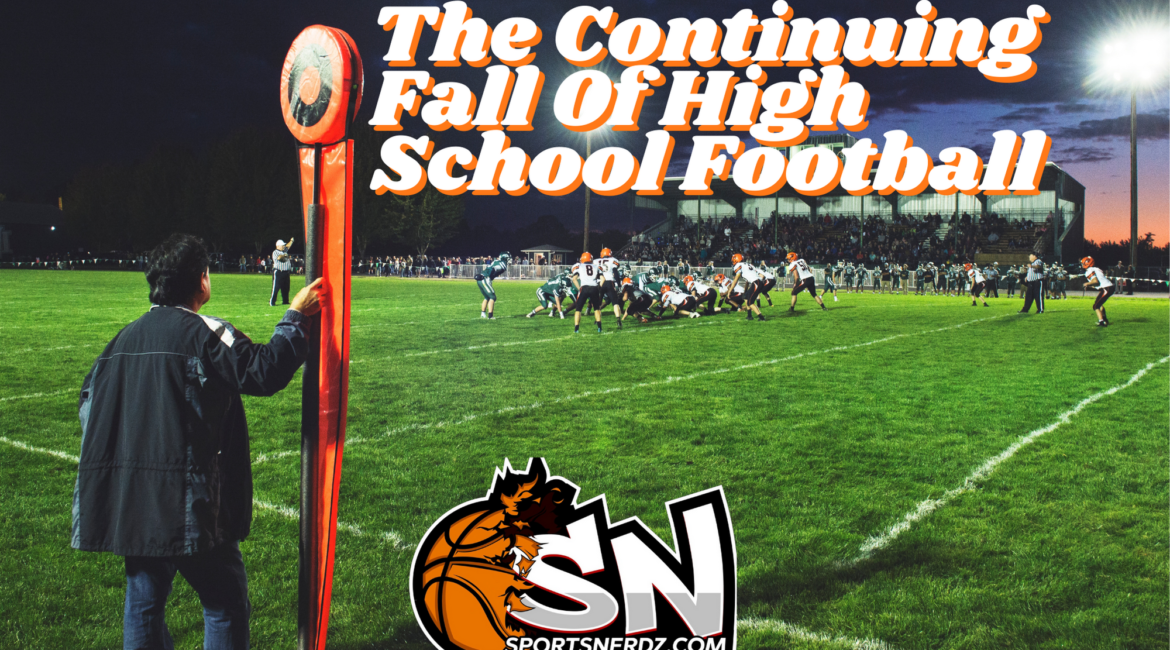Americans have always had a special place in their hearts for high school football. It’s a cultural institution that promotes teamwork, brings people together, and aids in the development of important life skills in young athletes. It’s more than just a sport. On the other hand, high school football participation in the US has noticeably decreased in recent years. What is the cause of this decline?
How does it affect the communities that it plays a huge part in?
Safety Issues: Growing concerns about player safety are one of the main causes of the reduction in high school football participation. Concerns over players’ long-term health and the possibility of concussions have increased scrutiny of the sport. Parents and athletes alike are alarmed by the continuing disclosures of Chronic Traumatic Encephalopathy (CTE), and the corresponding legal actions against the NFL.
As a result, a growing number of parents are reluctant to permit their kids to play sports linked to concussions.
Declining Interest: The decline in high school football participation can also be attributed to changing interests among young athletes. In an age of diverse extracurricular activities, from e-sports to lacrosse and soccer, there’s more competition for a teenager’s attention. Many students may opt for less physically demanding sports or other extracurricular activities that better align with their interests.
Expertise in different sports: Many students concentrate on one activity from an early age due to the increase in child sports specialization. The time commitment and physical difficulties of football can sometimes discourage young athletes who envision themselves as future stars in baseball, basketball, or soccer.
There has been a drop in the pool of talent for high school football as a result of this early specialization in other sports.
I have always been a fan of competing in as many sports as you can, but also understand if you prefer to concentrate on a single sport to try and excel in.
Resources and Expenses: High school football participation frequently entails substantial financial outlays for communities, families, and schools. Football demands maintenance on the field, coaching staff, and specialized equipment—all of which can put further pressure on already limited funds.
The drop in participation is further exacerbated by the fact that some schools are forced to reduce or abolish their football programs due to mounting financial concerns.
Academic Demands: There is greater academic pressure on high school students now than there has ever been. Because of the fierce rivalry for admission to colleges and universities, a lot of kids and their parents choose to put their academic performance above extracurricular activities like football. Student-athletes may feel pressured in this environment to prioritize their academics above their time on the field.
Consequences of the Drop: The sport of high school football and the communities it serves are greatly impacted by the drop in player involvement. Here are some important results:
Weakening of Community Ties: Friday night high school football has long served as a community gathering place, bringing people together to cheer on their local teams. Football’s decline has the potential to weaken these ties and the sense of community. It’s also very difficult for a student to feel that the crowd is there to support and engage, when they look in the stands and see the stadium is 75% empty.
The newly found epidemic of high school students transferring is a conversation for another day, but maybe if the community themselves (Not Just Parents) came out to support, they wouldn’t feel the need to play elsewhere. High school students do not need an undefeated record year end and year out. They need the moral support to be present. Kids are resilient to say the least.
Decreased Opportunities: With fewer high school football teams, there are fewer chances for adolescent athletes to participate in competitions, acquire life skills, and possibly receive scholarships. It’s never all about that scholarship to play a sport in college but, if the opportunity presents itself, why not go for it? If you’re good enough, they will find you, especially in today’s culture of social media.
More often than not, a College coach who is out on a recruiting trip will bypass a high school field with empty stands and 22 players to go to a packed house with a team of 55 players. The sense of community must be there to boost morale, teach them how to deal with adversity, and impact their lives moving forward when their time is up.
Loss of Tradition: High school football has long been a vital component of American society, but as it declines, a treasured tradition may fade. Smaller bands, fewer players on the field could be the writing on the wall for some communities that used to thrive on Friday nights.
Conclusion: A number of factors, including shifting interests, financial strains, academic priorities, safety concerns, and specialization in other sports, have contributed to the fall in high school football participation.
In addition to addressing safety issues and adjusting to the evolving nature of youth sports, we also need to acknowledge the invaluable contribution high school football makes to the betterment of communities and the athletic development of young people.
Striking a balance between tradition and safety is important, as is looking for methods to attract a new generation of players to the sport.
It won’t be possible to stop the downfall and guarantee that high school football will continue to play a significant role in American society for many years to come until then.
*This Article Contains Affiliate Links*
For More Articles Please Visit https://sportsnerdz.com/


